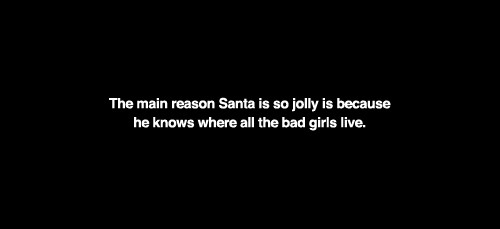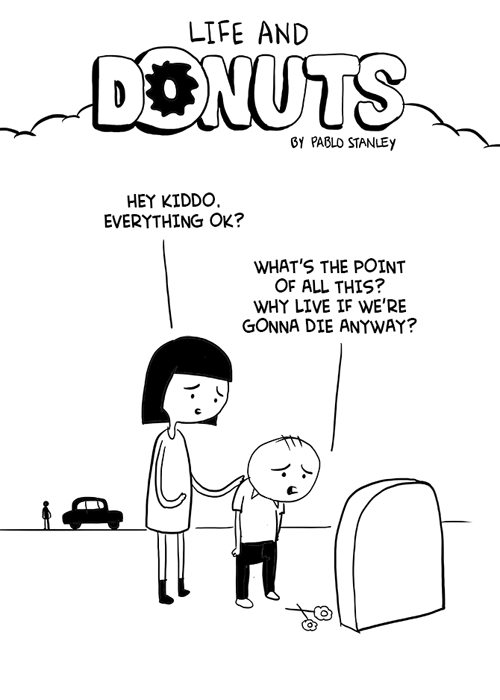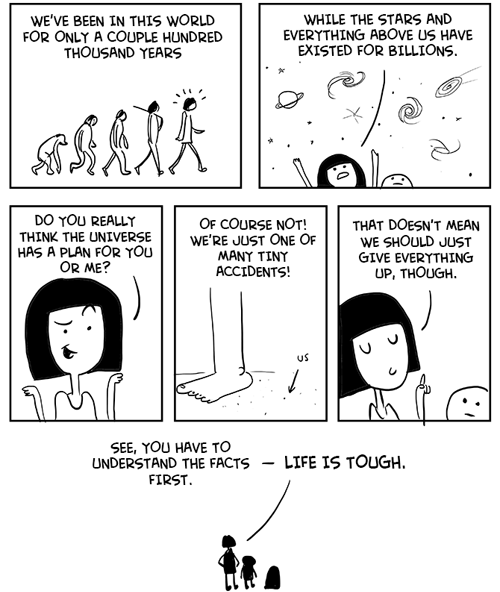Sending people to space has always involved a frank assessment of their defects, and in the early days, it was a matter of finding people without any. First it was fighter pilots—calm in a crisis, physically perfect, unquestioning in their execution of mission control’s instructions. Then, as it became clear that space was more than a military objective, space agencies began to train scientists for flight, placing otherwise reasonable researchers into fighter jets and swimming pools and screening them relentlessly for defects of vision, circulation, or character.
Now a new category of space traveler is headed beyond the stratosphere. Not the combat pilots and astrophysicists who train for at least two years just to get a shot at a trip, but the rest of us, with our carry-on bags, our iPads, our motion sickness. Folks. Citizens. Regular people.
At press time, Virgin Galactic’s SpaceShipTwo had already survived its first Mach-1 test flight, and its backer, Richard Branson, plans to be on board when it launches to space in the second half of the year. Meanwhile, the XCOR Lynx prototype is slated for tests early this year; the company says it will make a suborbital flight with passengers shortly thereafter. And SpaceX recently initiated the development of its own passenger spacecraft.
Until this point, space, the final frontier, existed almost as an abstraction for most of us, a curiously appealing void just beyond our grasp. Now it is within reach. The democratization of space has arrived.
There are, of course, caveats. Tickets are not cheap. A seat with Virgin Galactic or XCOR costs $95,000 to $250,000, which limits access to the very rich or the very dedicated. And then there is the issue of the flight. According to a spokesperson, “Based on the company’s initial evaluations and training, Virgin Galactic expects that most people should be able to fly.” But traveling to space takes a remarkable amount of physical stamina. I found that out the hard way.
On a sweltering summer day in southeastern Pennsylvania, I turn into the entrance of the National AeroSpace Training and Research (Nastar) Center, the only privately run spaceflight-training facility in the country. It looks rather humdrum, a warehouse surrounded by strip malls and office buildings, but it’s one of the few places where aspiring astronauts can endure the twin trials of liftoff and reentry without leaving Earth.
Nastar Center trains military, civilian, and private pilots and acts as a showroom for Environmental Tectonics Corporation (ETC), its parent company and one of the country’s largest manufacturer of simulators. When an allied air force wants to buy a flight simulator, ETC brings representatives here to whip them around. And in the private-space industry, the company found a new market for its services.
Upon entering the building, I see a gallery of notable visitors lining one wall, Buzz Aldrin and Richard Branson among them. Down the hall is an ejection-seat simulator and hypobaric chamber. And then there’s the enormous centrifuge into which I’m going to try not to barf today.
In the lobby, I shake hands with four giddy hopefuls clad in custom-made blue-and-red flight suits they brought with them. These are the first flight candidates from the United States Rocket Academy (USRA), a nonprofit that’s seeking to create a new category of astronaut-qualified average Joes, so-called citizen astronauts who can skip the rigorous two-year training that NASA astronauts must endure. These four, who hold tickets for the XCOR Lynx flight in 2014, will be among the first citizen astronauts to leave the planet. By being here at Nastar Center, they hope to help establish a training protocol for this new class of astronaut, defining the battery of tests that will someday go along with a ticket to ride.

Gy It’s extremely rare to experience prolonged sideways G-force in an air- or spacecraft. Only a flat spin or a T-bone collision tends to produce it. Gy can move or even dislodge organs.
FORCES OF FLIGHT
Gx This is the classic lips-peeled-back G-force. It looks gruesome, but it’s the most tolerable: In the 1950s, U.S. Air Force Colonel John Stapp showed a human can survive more than 45 Gx.
Gz The vertical G-force arises when the craft performs loops. It induces tunnel vision and unconsciousness when too much G-force drains blood from the head.
“It’s a beta/alpha test of a citizen-astronaut training program,” says Ed Wright, who founded the USRA after a career at Microsoft and is leading his group today. “We plan to bring people up who want to be space operators, not just space tourists.” Wright, a man in his early 50s with a head so perfectly round, it seems built for a flight helmet, has been planning this test for months. He believes in the private space movement. And he thinks that it can be a platform for a new kind of citizen science. During their precious few minutes in space, the four members of the USRA plan to conduct a handful of experiments chosen from dozens of projects submitted online. It’s a lower strata of scientific research, one that might not qualify for a NASA berth but could benefit from even the shortest time in orbit. But to do this, they’ll first have to reach space in sound body and mind.
In a classroom off the lobby, we receive a couple of hours’ instruction. Swee Weng Fan, a former flight surgeon for the Singapore air force, softly talks us through the basics of Newtonian physics and human physiology, explaining that our bodies are mostly water, run through by a circulatory system that keeps it functioning. Then we segue to how Newton’s discoveries—rest and velocity, acceleration, equal and opposite force—can quickly conspire to disrupt that system in terrible ways. When G-forces pull the blood from a pilot’s head and pool it at the feet, for instance, they upset the flow of oxygen to the brain. The result is G-force–induced loss of consciousness, or G-LOC. The eyes roll back, the body spasms, the pilot passes out—there’s even a bit of dreaming, Swee tells us. The warning signs include tunnel vision and temporary blindness. It will be our job this afternoon to resist G-LOC with an “anti–G-strain maneuver.” By tensing the legs, butt, and other major muscles below the heart, and by taking quick, deep breaths, Swee says, it’s possible to push blood back up into the head and not pass out, even as the centrifuge whirls us in circles at a steady 6 Gs.
By noon, I know this is all going to go very badly for me. I haven’t shared with the instructors or my classmates that I come from a long, queasy line. My grandfather heaved off the sides of the USS United States on his way to India. My father likes to tell the story of puking into an airsickness bag as I laid in his lap as an infant. I have been ill aboard boats, cars, and airplanes, and today, I am certain, I will add a centrifuge to my list.
We gather in an observation room overlooking the massive, whirling machine, whose arc is at least 50 feet in diameter. It moves impossibly fast, like a giant’s hammer in full swing; yet in this room not 30 feet away, we don’t feel any vibration. Monitors that broadcast views from within the centrifuge capsule line the walls. With the leather couches and the multiple screens, the place looks like a sports bar, albeit one in which every patron is wearing a flight suit.
There are two G-forces we’ll experience today. The first is along the z-axis, the one that goes up and down. It’s referred to as Gz. The Gz forces are what cause G-LOC, because they drive blood from the brain. The second force is Gx, which extends from the chest through the back. Gx causes the face to peel up and back and exerts a crushing sensation on the lungs. But while Gx is a nuisance to be tolerated (up to 10 Gx, whereupon it begins to inflict injury), Gz is what fighter pilots worry about and train to resist. We’ll endure four tests of roughly 10 seconds each—2.2 and 3.5 Gz, and 3 and 6 Gx. The lesser number is about half of what it takes to get to space. The greater number is the maximum a spacegoer will encounter during a suborbital launch. Swee will test us at half strength first—I’m guessing so we have a chance to back out.
I watch the first student strap in. Richard, the commercial pilot, looks to be in his late 50s and has wanted to be an astronaut for as long as he can remember. He is utterly unfazed by his tests. At the end of his heavier Gx run, he cheerfully pushes against the force with his arms, miming push-ups, and reenters the observation room to applause and high-fives.
I feel heartened by Richard’s performance. After all, I’m younger than he. But then Phil, the college science instructor, who looks closer to my age, takes his turn in the centrifuge. As the test ramps up, I hear him complaining of nausea over the monitors. I’m next, and I rise from my seat with worry in my stomach. As I approach the centrifuge, Phil wobbles down the steps and stands unsteadily for a moment. I can see that his hairline is ringed with perspiration. “I’m okay,” he says weakly, speaking past me into the air. I pat him on the shoulder and mount the steps.
Today, the nature and trajectory of a private spaceflight is well understood. Take, for example, Virgin Galactic: A carrier aircraft called WhiteKnightTwo will bring SpaceShipTwo, carrying six passengers, to 50,000 feet. Once SpaceShipTwo detaches, a hybrid rocket motor will ignite, and the craft will accelerate to supersonic speed in eight seconds, gradually pulling into a vertical climb and reaching a maximum velocity of Mach 3.5 during a roughly 70-second burn. At 328,000 feet, the border of space, SpaceShipTwo will float for several minutes before rotating its tail upward and falling back into Earth’s gravitational pull, treating passengers to beautiful views of Earth (and briefly subjecting them to roughly 6 Gs). At 70,000 feet, the tail returns to its normal position, and the craft glides to Earth for another 25 minutes. Total flight time: approximately two hours from boarding to disembarkation.
I can see his hairline is ringed with sweat. “I’m okay,” he says weakly, speaking past me into the air.
But while Virgin and XCOR have spent billions developing a reliable means to get passengers to space, many equally complicated issues remain, the first of which is determining who should be allowed to fly. For this, NASA has very strict guidelines: vision correctable to 20/20, seated blood pressure below 140/90, a height of 5'2" to 6'3"—and that’s before the water-survival tests and scuba certification. According to Federal Aviation Administration regulations on spaceflight, private space companies cannot sell tickets to anyone younger than 18. But that’s the only guideline.
For now, the question of whether to attempt the trip falls by and large to the passengers. The Nastar Center simulator can help that decision along—if you can’t make it through 10 minutes in a simulator, you may want to reconsider the second mortgage on your home. Virgin already recommends that prospective passengers take a spin in a centrifuge, and the new breed of space outfitters popping up to serve private space tourists are deciding if they should mandate this sort of training session for all customers.
The next issue companies will have to address is what to do with passengers once they reach 328,000 feet. Can they get up and float around? What happens if someone has a medical emergency? Or needs the bathroom? Nastar Center, as one of the few facilities in the world with the equipment to simulate a trip to space, offers a rare chance to probe these questions. “The companies that use us for training are asking us what we’re finding out,” says Brienna Henwood, the director of space training and research at Nastar Center. “They’re trying to sort out what to do.”
Beyond those very broad brushstrokes, the details of private spaceflight are still a long way from resolved. Consider that it took the airline industry years to establish protocols—seat backs, tray tables, etc.—that work for everyone. And that was in the Earth’s atmosphere. In a weightless environment, vomiting means the threat of bits of regurgitated food floating into your nasal passages. Sixty-two miles above Earth, what laminated safety-information card can help you with that?

Centrifuge Control Room
JJ Sulin

Another Cadet
Photo by JJ Sulin
Within the centrifuge, I strap into a pilot seat in front of a blank, curved wall onto which a false horizon and gauges are projected. The rotation of the centrifuge is designed to fool the inner ear into believing the horizon is where the simulation shows it to be, but my inner ear is more skeptical than most, unwilling to accept what it cannot see for itself, and before the door closes, I know I’m dead.
I spot an airsickness bag on one side of the seat, and I take it out to determine exactly where the business end is. Then I try to jab it back into its sleeve, fail, and let it fall to the floor. I’ve got more important things to worry about.
“Are you ready?” asks Swee over the cockpit speakers. He’s overseeing the simulation from a control room. “Yes,” I say, trying to sound jaunty. The centrifuge begins its “idle” rotation—a mere 1.4 Gs, intended to simulate flat, straight flight. The screen in front of me shows a level horizon, mountains passing beneath me. My inner ear knows something is not right. It can sense that I’m actually moving in a circle and keeps sending my eyes to the left in an effort to find what it knows is the real horizon, somewhere outside this capsule. I have to fight to keep focused on the false, flat one projected in front of me. “I’m a little dizzy,” I say faintly. “Okay, just rest until you’re ready,” Swee replies.
Eventually I realize I could spin all day. “It’s not going to get better,” I say. “Let’s go.”
The first maneuver is a hard right turn, perhaps 45 degrees. As I crank over, my inner ear begins to send multiple signals. You’re falling forward, it says. And to the right, it adds. Also, go ahead and scream, it suggests. My eyes don’t know where to look, and just as I begin to panic, the horizon rotates level again, adding a new clash of vestibular signals to the mix. One of four tests is over, and I already feel awful.
“Now we’ll do the same thing, but at 3.5 Gz,” Swee says. “Remember to clench your muscles and to take those intermittent breaths,” he adds. “Three . . . two . . . one . . .”
And now it’s worse. The turn is much steeper, and everything is wrong. Again my eyes don’t know where to look, but it doesn’t matter, because they’re starting to lose their ability to see. Red, veiny patterns intrude around the edges of my sight. I try to clench my muscles to force blood above my heart, and I’m huffing like a child throwing a tantrum, but the center of my vision is shrinking. Wow, it really is like a tunnel, I think. In a moment, I’m not going to be able to see at all.
Then the capsule cranks sideways to level out, and there’s another set of conflicting, sickening signals. Gz is over.

Spacial-Disorientation Trainer
JJ Sulin
I’m nauseated and dizzy, but at this point my brain is so occupied by thoughts of panic and death that it has chosen to accept this false horizon projected in front of me as the actual one, and I focus with relief on its stillness.
“Ready for Gx?” asks Swee. “Oh, God,” I say. He lets me breathe for a bit, and then it’s time.
Three . . . two . . . one . . . boom, I’m simultaneously moving down and up, somehow—and then I’m very clearly rushing straight up. The feeling is accompanied by an amazing crushing sensation, one that sends the skin around my mouth up toward my eyes and holds it there. Ten seconds pass, and the leveling out feels like falling face-first off a house.

Jacob Ward
Photo by JJ Sulin
And now the last test of the morning: a full 6 Gx. This time, if you were to give me a choice between, say, enduring this test and shooting myself in the head, I’d choose the latter—if only I could lift my arm. I can feel my Adam’s apple falling back across my airway and touching the other side. I’m having trouble breathing. I’m literally being crushed, and I want it to stop. Even as I level out, my inner ear is in full-on rebellion, and my eyes are all over the capsule. I can almost smell the sour tang of the pastrami I had for lunch. And then the door opens, and I’m helped out gently.
I didn’t throw up. That much I can say. But I have to unzip my flight suit to the waist and collapse onto the sofa in my damp T-shirt to hold it together. Somebody fetches me a Coke. And I, who came to this program to quietly participate and observe, find myself the center of attention. I receive a half hour of sympathetic pats on the back from a roomful of people who not only have more time and money and courage than I do but who also have a miraculous resistance to what I can only describe as intense motion sickness.
From my position on the couch, I watch the rest of the prospects take their turns. One woman, Maureen, who is a member of USRA, practically runs into the centrifuge, she’s so excited. She weathers the test unperturbed, except for one thing: “Hey, an airsickness bag hit me in the face as I was going around!” she says, exiting the centrifuge. I raise my pale and sweating hand in halfhearted apology and close my eyes.
If the Gz and Gx tests were the warm-up, the day’s main event is a full simulation of the trip aboard SpaceShipTwo. Swee says he’ll give me a trial run under only half the expected G-forces and then a final test at full Gs.

Simulator Chair
JJ Sulin
He offers some advice as I strap in. “Don’t turn your head,” he says. I press backward against the headrest and try to remain still. This makes an enormous difference, in that the movement of the centrifuge and my head don’t produce mismatched signals in my inner ear.
The capsule tips and bobs as it frees itself from the simulated carrier craft. I feel as if I’m tipping back in my chair. I’m not nauseous, but I’m terrified: The simulated view shows me just how far and fast the Earth is falling away, which only deepens the panic I’m working hard to control.
At the apogee, where weightlessness takes hold, everything goes silent, and I’m treated to a slowly rotating view of the curve of the planet. “What’s that I’m looking at?” I ask. “That’s Los Angeles,” says Swee. And I realize, as the “ship” turns, that I can see the San Francisco Bay Area at the top of my view. As a robotic voice counts down to the reentry sequence, I imagine my wife in Oakland, chasing my daughter around our backyard. Astronauts on spacewalks have often reported a sense of euphoric kinship with the stars, the universe, everything, leading to a dangerous reluctance to reenter the spacecraft. I have the opposite urge: a sensation of being impossibly far from home and an overwhelming desire to be instantaneously transported to it.
The centrifuge begins to simulate a roaring, shuddering reentry sequence, less severe than the launch but just as terrifying, and finally we level out at 50,000 feet, where the simulation ends. “Are you ready for the full simulation?” Swee asks. I have to think for a second. I’m dizzy and frightened and thoroughly exhausted. I want to will my way through it, but I also don’t want to puke in the centrifuge that my classmates paid good money to use. “No,” I say to Swee. And with that, I wash out as a citizen astronaut.
As my flight home roars down a runway at the Philadelphia airport, I find myself calculating my Gx (no more than two, I decide), and as we bank upward and then to the right, I can sense Gz creeping into the mix. I feel my blood being gently nudged toward my feet, although I know it’s not enough to take it away from my brain.
Most important, I’m suddenly aware of the cocoon of technology that’s compensating for my body’s vulnerability to it all. Cabin pressurization is top of mind for me at the moment. Ten thousand feet, it turns out, isn’t just the altitude past which it’s okay to use portable electronic devices. It’s also the altitude at which passengers begin to require oxygen assistance. At our cruising altitude of 32,000 feet, no one on board could function for more than 15 seconds without the oxygen mix in our cabin. After that, we’d start to pass out and die.
And yet I’m leaning back and turning on a movie, content that the systems around me will keep me alive. After all, millions of people have flown before me.
Is that what it will take to establish confidence in private space travel? Millions of people going first? Hundreds of thousands? Thousands? It seems impossible, somehow, that the requisite number of volunteers are willing to risk nausea—or worse—to see the stars 62 miles closer than we can from the ground. Certainly, Wright and his group are undaunted, powered by a lifelong desire to experience space firsthand and aided by physical capabilities that I simply don’t have. I wish them the best. If successful, they’ll redefine what it means to have the right stuff—and hopefully pioneer a new citizen-space science in the process. But while their place may be in the stars, my place, I learned, is right here on Earth.
Jacob Ward is the former editor-in-chief of Popular Science.















































 2013 was a bust! Or so we've been told. Whether you follow that line of thinking or reflect on the last 363 days in a more optimistic light, it's clear the year wasn't all big breakthroughs and great triumphs. This was the year of government ...
2013 was a bust! Or so we've been told. Whether you follow that line of thinking or reflect on the last 363 days in a more optimistic light, it's clear the year wasn't all big breakthroughs and great triumphs. This was the year of government ...




































































 Moon (2009)
Moon (2009)